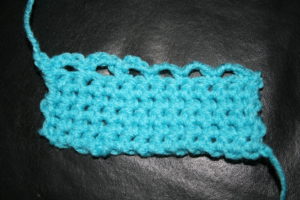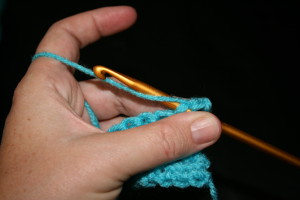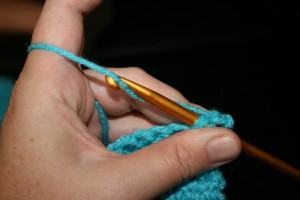 It is funny sometimes how you don’t really think about the little things. I was assisting with a crochet workshop this past week end, in which people were learning crochet stitches by placing an edging around a handkerchief, when the question came up about “yarn overs”.
It is funny sometimes how you don’t really think about the little things. I was assisting with a crochet workshop this past week end, in which people were learning crochet stitches by placing an edging around a handkerchief, when the question came up about “yarn overs”.
Now talking about something as simple and fundamental to crochet as the ability to put yarn over a hook should be pretty straight forward, but in reality it is not. There are primarily two different ways that this is done, the most common is to place the hook under the yarn and twist counter clock wise, and the other is to placer the hook over the yarn and twist clockwise. I always find it difficult to process the description mentally so I have included photos to help visually.
The effects from this differing yarn over techniques are subtle, but there is a difference, the latter method (coming over the top) adds more twist, and thus twist energy then the former (coming under the bottom). This twist energy is most evident in basic stitch of the chain, it is caused to twist. Thus more complex stitches, such as picots, do not lay flat and require additional blocking to have a finished look. (Although it was pointed out to me, that if you wanted a really ruffled edge that this yarn over could be a benefit).

samples of yarn over chain stitches, those are the left are from under, and the right are worked with yarn over from the top
Another effect of this method is that the stitches can appear more compact, and tighter, even with the airiest of yarns. The extra twist compacts the yarn slightly and thus creates a stitch that may not be as full as that created by yarning over from the bottom.
If you find that your crochet fabric has a mind of its own at times, you may want to look at the simple steps you use to execute them and see if a small change could make a big difference. I always find it amazing that it really is the little things that can make all the difference.


